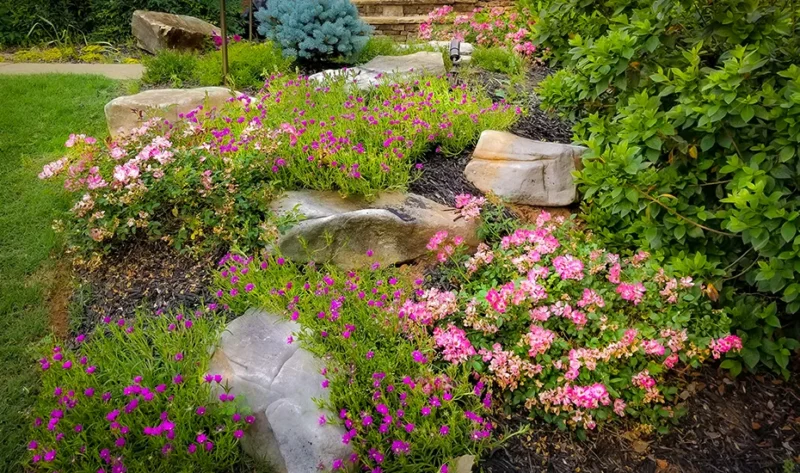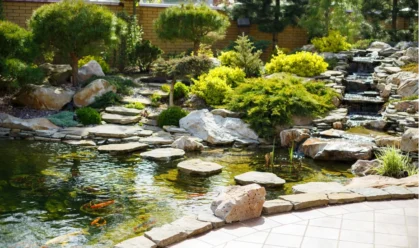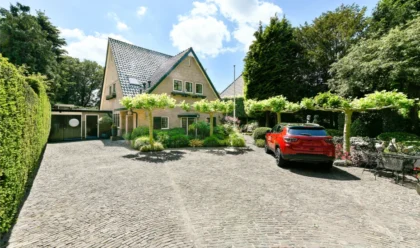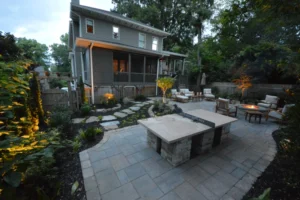Starting a sustainable garden is more than just a rewarding hobby, it’s an ideal way to contribute to the environment. However, the idea of creating and designing a garden often brings apprehension, not only to beginners but also to those willing to adopt more eco-friendly practices. That’s quite obvious. This guide will act as the foundation for creating a garden that will thrive naturally and sustainably.
With these ten important tips, you will not only learn to grow just fresh fruits, vegetables, and herbs but also create wildlife habitat beneficial to the ecosystem and reduce your impact on the climate.
How to Create a Sustainable Garden?
1. Choose the right location
Selecting the site is among the basic activities while starting a sustainable garden. This is not just about approaching any vacant spot in your yard but rather taking into account the needs of your plants. Look for a location that gets ample sunlight—most vegetables and herbs need at least six hours of direct sunlight daily. Also, keep in mind the proximity to the water source that will be available for easy reach throughout the year—you don’t want to budget much for applying either hoses or sprinklers.
It is advised to select a location with adequate drainage, as puddles encourage root rot and other issues. If possible, choose a location that is not directly hit by heavy winds, which may injure plants.

2. Start with Healthy Soil
Healthy soil is the foundation of any successful garden, but for a sustainable garden, it’s even more critical. Instead of relying on chemical fertilizers, focus on building rich, organic soil. Start by testing your soil to determine its pH level and nutrient content. This will help you understand what amendments might be necessary.
Composting is an excellent way to enrich your soil with organic matter. Compost adds essential nutrients, improves soil structure, and promotes healthy microbial activity, all of which are vital for plant health. Mulching with organic materials like leaves, straw, or grass clippings can also help retain moisture, regulate soil temperature, and suppress weeds.
3. Choose Native Plants
When selecting plants for your garden, native species are your best bet for sustainability. Native plants are naturally adapted to your local climate, soil, and pests, which means they require less water, fertilizer, and pesticides. They also support local wildlife, providing food and habitat for birds, insects, and other creatures.
Do some research to identify the native plants that thrive in your area. You can mix them with other edible or ornamental plants, but keeping a strong focus on native species will make your garden more resilient and easier to maintain.

4. Conserve Water
Water is a resource, and one should try to keep it prudently in making a sustainable garden. This is beyond using water wisely but instead on several strategies that will reduce your usage without compromising the health of your plants.
First, you might want to consider having a rain barrel to capture water running off your roof. The setup provides a cost-free, green water supply for your garden. Another water-saving system is the drip-irrigation setup; it provides water directly at the base of the plants, which decreases evaporation and runoff significantly.
Grouping plants that require the same amount of water, thus not all the plants require equivalent and daily watering, prevents waste of water. Lastly, more water-conservation steps are watering your garden at dawn or the evening.
5. Practice Companion Planting
Companion planting is a technique where certain plants are grown together to enhance each other’s growth, deter pests, or improve flavor. This method reduces the need for chemical fertilizers and pesticides, making your garden more sustainable.
For example, planting basil next to tomatoes can improve the tomatoes’ flavor and deter pests like aphids. Marigolds can be planted around the garden to repel nematodes and other harmful insects. By carefully selecting plant companions, you create a more balanced and healthy garden ecosystem.
6. Use Organic Pest Control
These pesticides may also kill off beneficial insects, contaminate the soil, or have negative effects on human health. If one wants a truly sustainable garden, then it is time to switch over to organic pest control methods. First, attract natural predators such as ladybugs, spiders, and birds that will stop an infestation of unwanted pests in its place.
You can also mix some organic sprays from neem oil, garlic, and soap. Other non-chemical controls would be the use of physical barriers, like row covers or netting, which repel the pests away from your plants. Regularly checking for signs of pests in your plants and acting quickly can prevent small issues from turning into large ones.
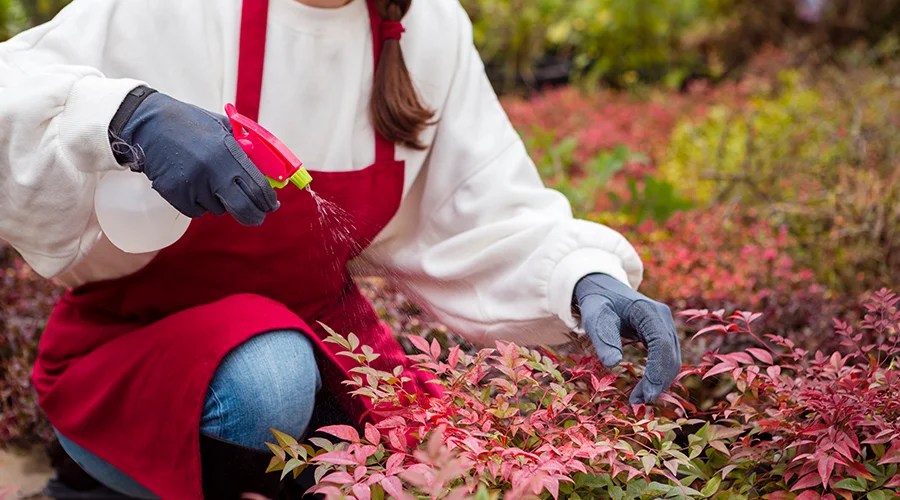
7. Reduce Waste with Composting
Instead of, throwing away vegetable peels, eggshells, coffee grounds, and other kitchen scraps in the bin, compost them for wealthy soil. This is because composting not only enriches the soil but also reduces waste.
Leaves, cut grass, and tree branches are examples that can decompose properly in the composter. Using these items helps reduce the amount of waste that ends up in a garbage site while benefiting your home garden in the long run. To achieve better results though remember to keep a ratio between “green” (high nitrogen materials) and “brown” (high carbon materials) during composting process.
8. Avoid Chemical Fertilizers
Although chemical fertilizers can initially promote plant growth, they can also become detrimental to the environment by leaching into water bodies and undesirably affecting local ecosystems. This Bio-Logic Fertilizer application is no longer maintained and should actually not be your first choice when going for a sustainable garden (a shortcut I know).
Materials like compost, manure, bone meal, and fish emulsion further enrich the soil with the nutrition plants need to thrive while avoiding leeching or other dangerous side effects of synthetic chemical fertilizers. These natural options release nutrients over time — meaning the plant can still use them, which will result in the constant and healthy growth of your plants. It also improves soil structure, creating a healthy atmosphere for root development and beneficial microorganisms important in terms of farming in the long haul.
9. Create a Pollinator-Friendly Environment
Pollinators like bees, butterflies, and hummingbirds are essential for a thriving garden. By creating a pollinator-friendly environment, you can boost the productivity of your garden while supporting local wildlife.
Plant a variety of flowers that bloom at different times throughout the season to provide a continuous food source for pollinators. Avoid using pesticides that can harm these beneficial creatures. Including a water source, like a shallow dish with stones for bees to perch on, can also attract pollinators to your garden. By encouraging a pollinator-friendly environment, you help ensure the success of your garden and contribute to the health of the ecosystem.

10. Embrace Perennial Plants
Perennial plants are ones that grow for more than two years, returning every season. Planting perennials is also great for sustainability in your garden because it takes so much less maintenance and resources than annuals.
Nonetheless, perennials such as rhubarb and some herbs supply food year after year without a repeat planting. They also improve soil health by rebuilding it, gaining all the long-term benefits described above as their roots stay on-site fixing nitrogen in place reducing erosion, and improving soil structure over time. Californian Gardens are full of annuals (plants that complete their life cycle in one season), which invariably require replacement every year and don’t provide continuity. By using perennials you make your own garden more self-sufficient, with less labor from yourself for the same output.
Conclusion
Starting a sustainable garden is a journey toward creating a more eco-friendly and self-sufficient lifestyle. By following these ten essential tips, you’ll be well on your way to cultivating a garden that thrives naturally while minimizing environmental impact. Remember, the goal is not perfection but progress—every small step you take contributes to a healthier planet. So, roll up your sleeves, dig into the soil, and enjoy the rewarding process of growing your own sustainable garden. Happy gardening!













